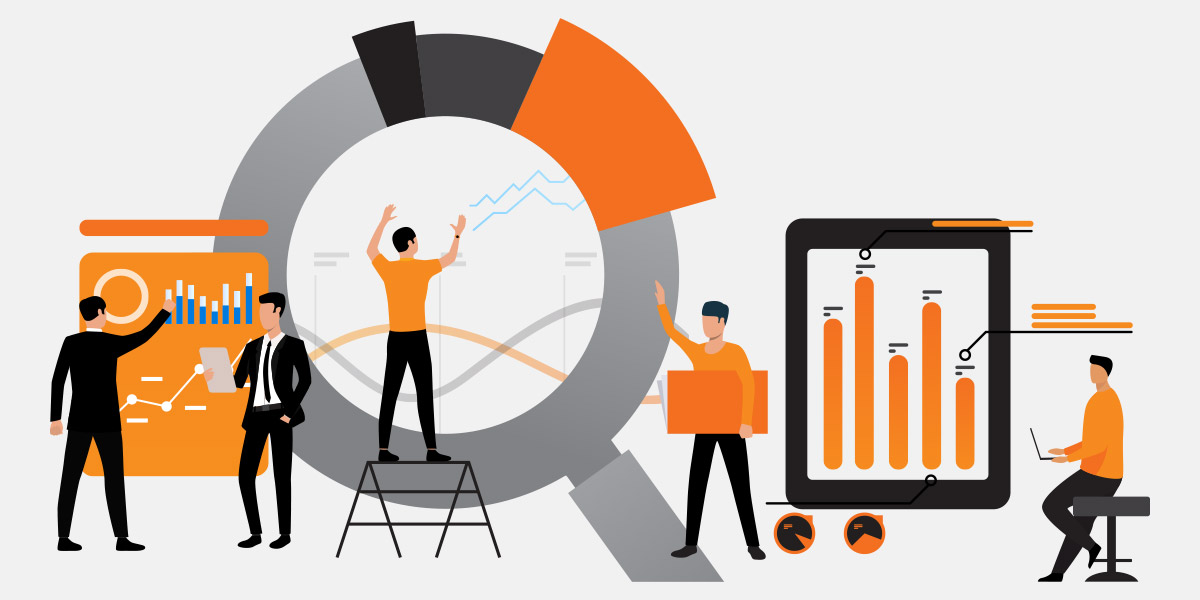
With technology being integrated into every aspect of human life, tons of data is being generated every second. Each byte of data provides an insight into field which can yield valuable information. With the amount of data being generated, an equally strong and thorough analysis is required in order to understand the information. This has led to the development of a specialization in the field of Computer Science Engineering known as Data Analytics.
Data Analytics is a special domain of Computer Science Engineering which pertains to researching various data sets with the aid of various tools and softwares in order to draw inferences and conclusions. Although it is a relatively new term in the booming IT industry, people and companies alike are catching up on the benefits of this domain.
The process of data analytics is usually divided into four categories – Descriptive, diagnostics, predictive and prescriptive. In descriptive analysis, the main aim to answer the question – ‘What Happened?’ The historical trends in the data set are studied, and various indicators are measured in order to summarize the data. This is followed by advanced analytics, which answers the question – ‘What If?’ here, advanced tools are used to extract data, make predictions and discover trends.
The predictive analysis helps in analysing the trends based on the historical data, and thus predict the outcome in the future. They are mainly used to provide an insight into the raw data. Lastly, prescriptive analysis helps in determining what should be done, which is based on the outcomes predicted by the predictive analysis.
Generally, the entire process of analysing a raw dataset can be summarised by the below given steps:
1. Data Requirements: The data sets which are to be used are defined by the requirements set by the consumer. Based on the requirements, the data sets are generated or collected.
2. Data Collection: Once the requirements are set, the raw data is collected as per the requirements from sources, both by various sensors such as traffic cameras or from personnel themselves through interviews or online sources.
3. Data Processing: Once the data is collected, it must be processed into an organised format in order for smooth analysis.
4. Data Cleaning: After the data is processed, errors in the data such as duplicates, inaccuracy in the data are cleansed in order to refine the data set.
5. Data Analysis: Once the data is cleaned, it can be sent for analysis. Methods such as exploratory data or data visualisation can be used to identify trends.

The analytic tools that are used are either qualitative or quantitative in nature. While qualitative analysis focuses on interpreting the non-numerical data such as audio, videos and themes, the quantitative analysis focuses on the numerical data which has quantifiable variables.
Certain processes are pretty commonly used for data analytics. Data Mining is one of the most popular practices that are currently being applied in order to break down the terabytes of data that is collected. It then creates correlations between groups of data, and also finds out the anomalies in them. Another popular practice that is being used by almost everyone on a daily basis is the text analytics. It is the analytical method which is used to develop the auto-correct words for a virtual keyboard. It also forms an integral part of the predictive typing for emails and smartphone keyboards. Another prevalent method is the data visualisation method, which is usually done though visual charts such as bar charts and pie charts.
The above mentioned methods show how essential data analysis is to any organisation. Various sectors have adopted this practice in order to get a competitive advantage over their rivals.
• Product Development: Before developing a new product, companies tend to conduct extensive reviews across various customer bases in order to know how the product will be received. This data can then be analysed in order to come up with the product that will be successful.
• Targeted Content: Knowing what a customer wants makes it easier for marketing teams to curate a more personalised campaign which will attract that customer base.
• Operational efficiency: Data analysis often helps organisations identify opportunities that can maximise the profits by streamlining operations and eliminating the process of waiting.
Other sectors use data analytics widely throughout their systems in order to maximise the output. Financial sector utilises the analysis to efficiently allocate funds, while the medical sector saves lives of many patients by predicting the growth of any ailments as well as by improving the diagnostic testing.
Analysing big amounts of data can lead to optimization of process and its efficiency across various industries. These improvements can lead to gaining an edge over the competition present in the market, and thus boost the revenues of the company.




